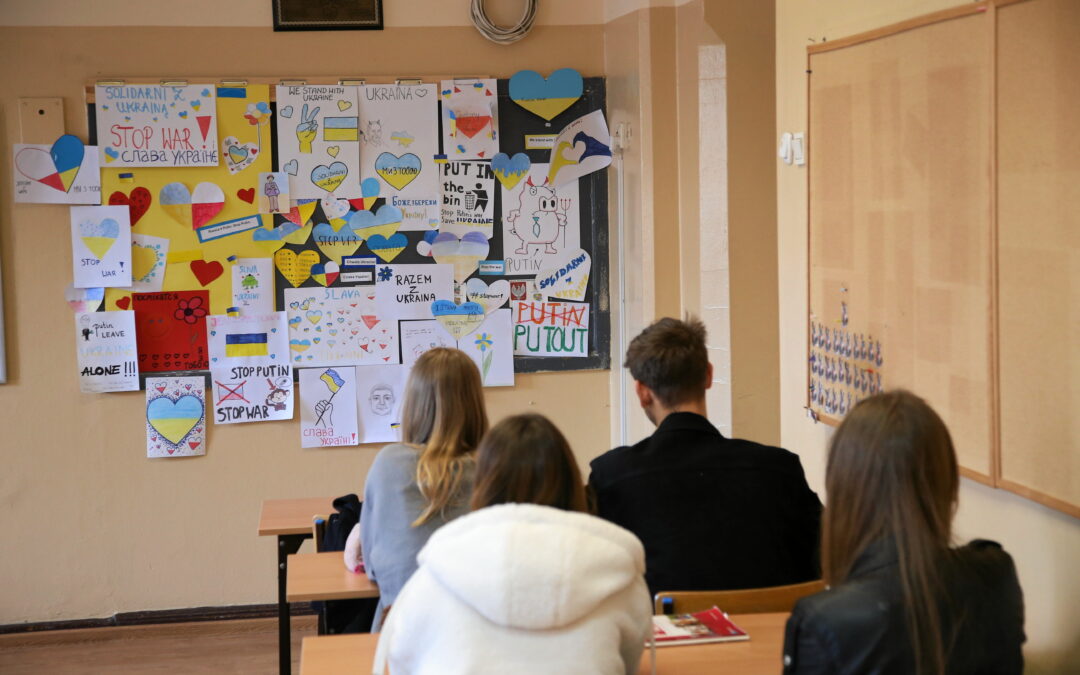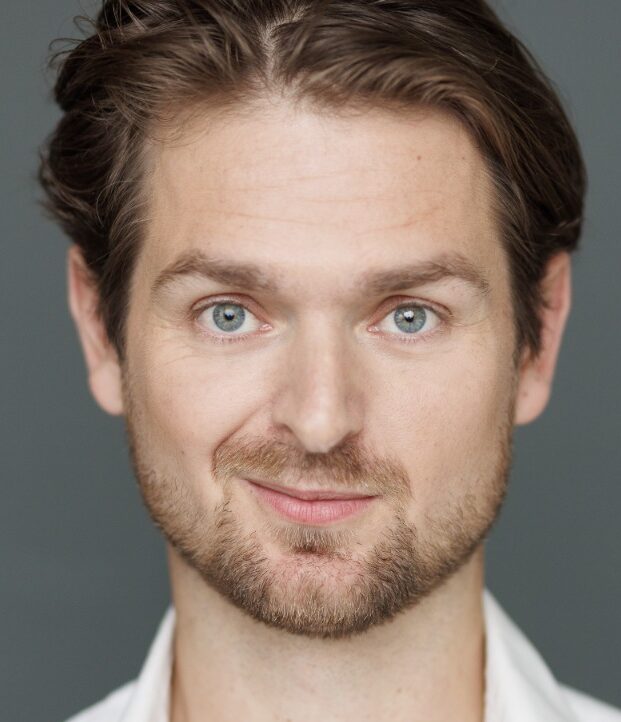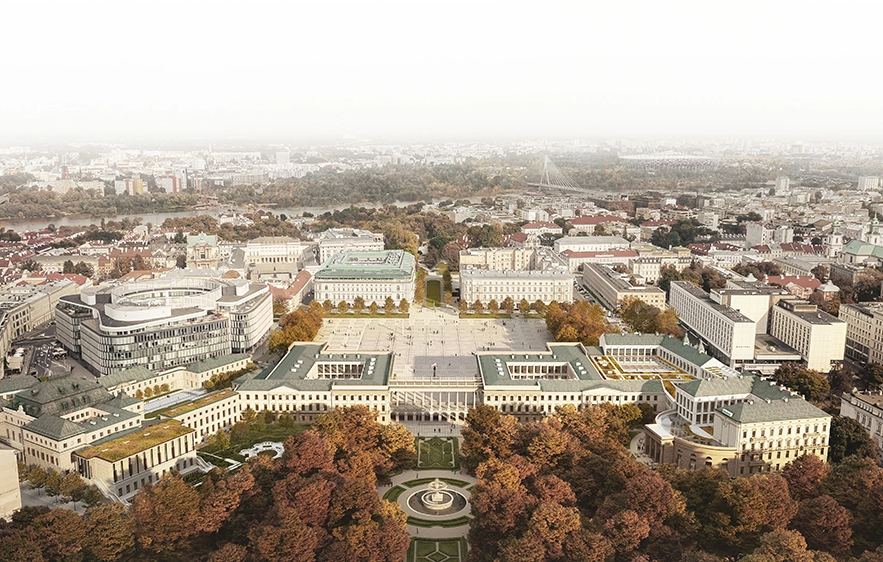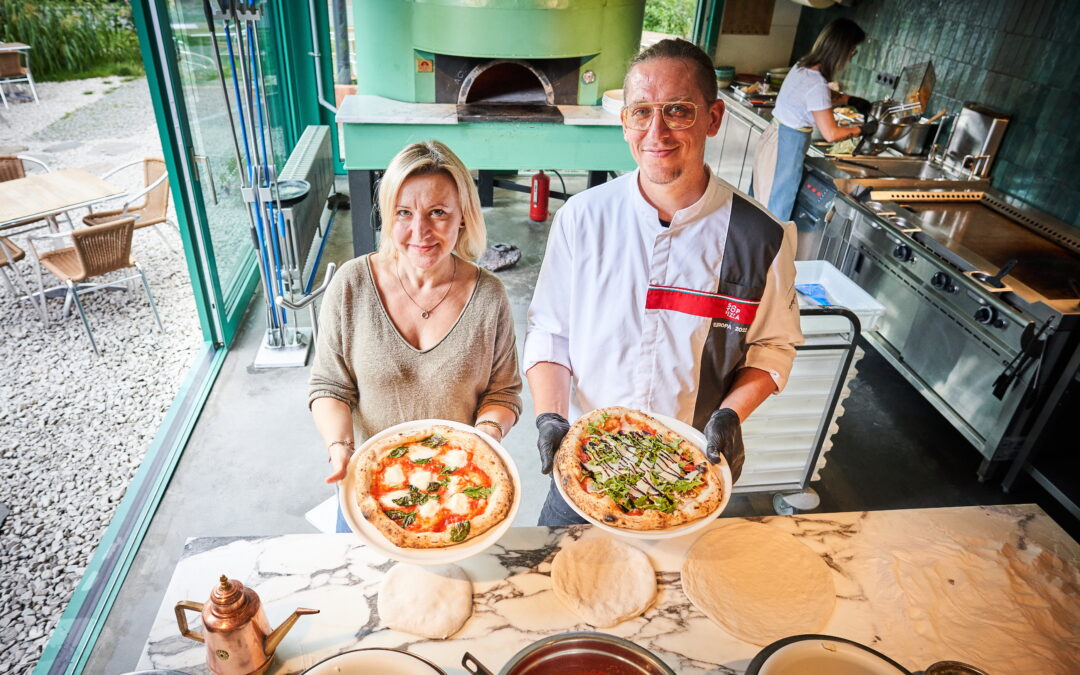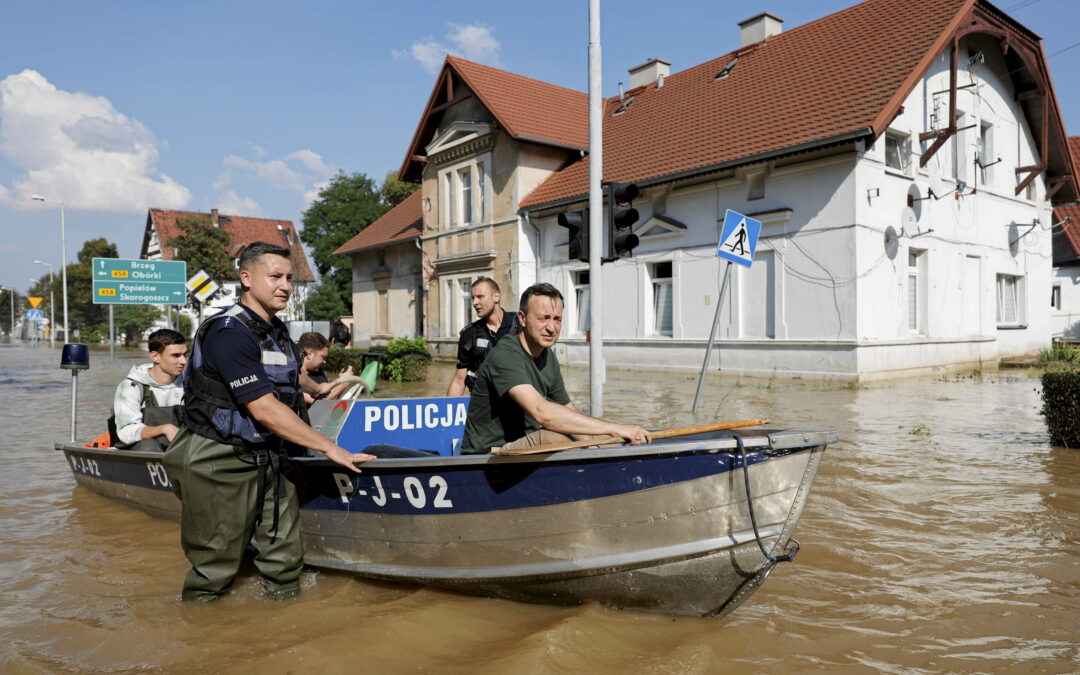By Christiaan Paauwe and Alicja Ptak
“At first it was scary,” says 14-year-old Danylo, one of tens of thousands of Ukrainian refugee children in Poland who had to start attending Polish school at the start of this month after a change in the law. “But now it’s not as scary.”
Danylo was part of the wave of refugees that flooded into Poland in 2022 after Russia’s full-scale invasion of Ukraine. But, like many other refugee children, he initially continued his education in the Ukrainian system remotely.
Later, he joined a Ukrainian school in Warsaw, where children are taught according to the Ukrainian curriculum and prepared for Ukrainian exams. He and his family hoped they would soon be able to return home.
“At the beginning of the war, we thought it would be over quickly,” says Danylo in an interview with Notes from Poland and Dutch broadcaster NOS at the Polish school he is now attending in Warsaw.
“I miss my city, my grandparents, my cat and my dog. And I miss my [old] school,” he adds. “But here it’s not so bad either.”
Tens of thousands of new Ukrainian pupils are beginning school in Poland today after the government made it compulsory for refugee children from Ukraine to be in the Polish education system in order to receive benefits https://t.co/tbqbQ6U13i
— Notes from Poland 🇵🇱 (@notesfrompoland) September 2, 2024
While Poland began allowing Ukrainian refugee children to attend public schools soon after the refugee crisis began in 2022, most of them initially continued to learn online. By May 2022, Polish schools had admitted around 200,000 of an estimated 700,000 Ukrainian school-age refugee children in Poland.
This helped alleviate the strain on an already overstretched Polish education system, says Jędrzej Witkowski from the Centre for Civic Education (CEO) in Warsaw, an organisation that supports teachers in Poland.
“It worked well the first year because of the crisis situation,” says Witkowski. “But after that, we should have made the children go to school.”
However, the Polish government hesitated to introduce compulsory Polish schooling. The idea was also not welcomed by Ukraine, which feared that many refugees would not return if they continued to assimilate in other countries.
Sorry to interrupt your reading. The article continues below.

Notes from Poland is run by a small editorial team and published by an independent, non-profit foundation that is funded through donations from our readers. We cannot do what we do without your support.
But in May this year, Poland’s parliament passed a law introducing a requirement making it compulsory for Ukrainian children to attend Polish schools from the start of the new year in September if their parents are to receive child benefits.
No one knew exactly how many children would begin attending school this month, with education ministry estimates ranging from 20,000 to 80,000. In the end, around 40,000 new Ukrainian pupils turned up. There are now a total of around 220,000 Ukrainians enrolled in Polish schools – both refugees and also members of the pre-existing large immigrant community.
“This is an important step, especially considering that due to the pandemic before the war, some children only had online education for four years,” says Witkowski. “We know that this has major consequences for development.”
This week marks the one-year anniversary of Russia's full-scale invasion of Ukraine.
To find out what the last year has been like for the refugees, I went back to talk to some of the Ukrainians I had previously interviewed.https://t.co/tA6x40Bcgn
— Alicja Ptak (@AlicjaPtak4) February 21, 2023
Like Danylo, many of the children who joined Polish schools this month face a number of challenges, with the language barrier being among the most prominent.
To help children acclimatise, some Polish schools, like the Tadeusz Gajcy primary school Danylo attends, offer one-year preparatory classes to help students get into the rhythm of their new school and learn Polish more quickly.
Danylo’s new class is a small group of about a dozen foreign students who do not yet speak Polish, primarily children from Ukraine. During the classes, the teacher is supported by a Ukrainian intercultural assistant, Irina, who translates and acts as a liaison between pupils, parents and the school.
“Language remains the biggest challenge,” she says. “But also the different culture and traditions in Poland. We help with that.”
Poland’s education ministry is training intercultural assistants to help schools with an expected rise in the number of Ukrainian students.
From September, it will be compulsory for Ukrainian refugee children to attend school in order to receive benefits https://t.co/tRKBgcSlsd
— Notes from Poland 🇵🇱 (@notesfrompoland) July 10, 2024
Students who have been studying in Polish schools for some time and already know the Polish language feel the challenges of cultural integration particularly strongly.
It is currently the main challenge facing Karolina, a 17-year-old Ukrainian student at Warsaw’s Limanowski high school. Despite her nearly flawless Polish and can-do attitude, she admits it was hard for her and her Ukrainian friends “to find a common language” with Polish students.
When she joined Limanowski in 2022, thanks to her knowledge of Polish she could choose whether to go straight into a class with other Polish students or be in a Ukrainian-only class.
Wanting to acclimatise and learn Polish faster, she chose the first option, but she found it more challenging than anticipated. Before the first year was over, she asked the principal for a change.
“We are all Slavic people and we have a similar mentality, but it’s still not the same,” she says, adding that the difference in experience also weighed on relationships with her Polish counterparts. Although they did not shy from offering a helping hand, “they could not understand our reality”, Karolina notes.
“They have their own rhythm of life, they do not have to remind themselves about the war constantly,” she adds. “I won’t say that it was only that they didn’t interact with us, but we didn’t really want to interact with them because too much was still happening…At the time, we were just in our Ukrainian hideout, and we had enough communication with each other.”
Net positive sentiment towards Poland among Ukrainians has collapsed from 92 a year ago to 26 now.
The same polling indicates that blockades of the border by Polish truckers and farmers are the primary cause of the decline.
For more, see our full report: https://t.co/ZVh8sJryyk pic.twitter.com/OlFHDtwwsO
— Notes from Poland 🇵🇱 (@notesfrompoland) April 22, 2024
Both the principal of the Limanowski high school and the deputy principal of the Tadeusz Gajcy primary school say they have not encountered the problem of racism or cultural hatred in their schools, which both specialise in intercultural integration.
“However, as far as other schools are concerned, we hear sometimes that, unfortunately, the aggression, whether verbal or even bodily, is sometimes directed towards foreigners, which is very sad,” says Joanna Łebek, the deputy principal of the Tadeusz Gajcy primary school.
Incidents of nationality-based hate have been noted by Amnesty International and CEO. Both institutions, however, were unable to determine the scale of the phenomenon.
“In the schools participating in the study, we can observe a complete spectrum of attitudes of Polish students, from being kind and supportive to indifferent, ‘passing each other by’, to outright hostility,” wrote CEO in its “Refugee students in Polish schools” report.
Back at Limanowski, Polish students describe their Ukrainian counterparts with a lot of warmth. One of them, 18-year-old Mateusz, proudly says that one of his closest friends now is a Ukrainian boy, Ruslan.
“We are just trying to help them acclimatise here, help them at school,” he says. “There’s not some great barrier, just like teenagers with teenagers.”
Main image credit: Cezary Aszkielowicz / Agencja Wyborcza.pl
